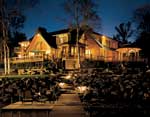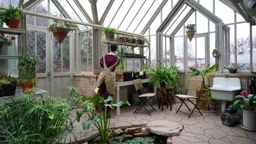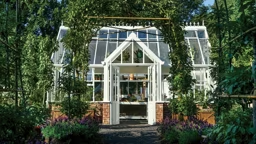Why, then, does outdoor lighting go overlooked? More often than not, a home's exterior lighting plan is an afterthought, falling somewhere on the priority list after choosing light switch covers and just before ordering pizza for the construction crew.
It doesn't have to be that way; in fact, it shouldn't be. With a little forethought and planning, the proper outdoor lighting scheme can enhance your home's appearance and your enjoyment of the great outdoors — not to mention your family's safety.
 Why Light Up The Night?
Why Light Up The Night?Outdoor lighting is first and foremost a matter of necessity. You need to see where you're going, whether it's up the path from the dock down by the lake or across the driveway to the storage shed.
Safety, of course, is another consideration. Properly-lit paths and walkways are safe surfaces where trips and falls are less likely. When you can see the spaces around your home, you feel more comfortable moving through them at night. You also have peace of mind from knowing who or what is near your home.
As strange as it may sound, outdoor lighting can also enhance your log home's interior spaces. Lighting beyond your home's windows and doors makes the spaces and views outside your windows part of the rooms inside your home. Perhaps more importantly, outdoor lighting has the ability to create the perception of safety and comfort by eliminating "black holes."
Lighting experts use this term to describe how windows become sheets of black that block views when lighting inside the home is not balanced against the dark of night outside. Instead of offering views out of the home, as they do when they appear transparent during the day, the windows reflect the lights and items inside the home.
When interior lighting is balanced by artificial lighting beyond the windows, you can see the area around your home and therefore feel more comfortable.
Beyond these practical considerations, outdoor lighting enhances the enjoyment of your yard, decks and patios. You put a great deal of work into choosing the right piece of property and enhancing it with landscaping. Why not show it off? You build decks and patios for entertaining. Why not enjoy them day and night? You can do just that with appropriate outdoor lighting.
Design Considerations
Each outdoor space should be lit according to its use. Walkways and paths allow you to navigate from one place to another. Entries get you in and out of the house. Decks are made for lounging or entertaining. Gardens and flower beds are pleasing to the eye and, on occasion, provide a place to linger. Consider fixture placement, light strength and color, and the angle of illumination.
Mood. Consciously thinking about how an area will be used will help you determine the mood or feeling you want to create there. Drama is often the intent of lights placed in gardens and stands of trees, but safety is paramount on that walkway between the house and the compost bin or garbage center. On the other hand, lighting should encourage conversation without overpowering guests on a deck and provide intimate privacy near a hot tub or private balcony.
Security & Safety Lighting
When there's a disturbance outside your home, you want to be able to see what's going on — fast. To that end, security lighting should be mounted high to provide a sweeping wash of light over the entire yard. This is best achieved with multiple fixtures mounted in your home's eaves and directed in different directions.
Switches that control security lights should be close at hand — perhaps even in the master bedroom. You can also install motion sensors on security fixtures, but remember that wildlife may trigger them.
Safety lighting is installed in common sense places:
- Along walkways
- At entries/doorways
- Going up steps
- Around the garage and along the driveway
Good outdoor lighting will grow with your home's landscape and hardscape. It will also create a visual focus (or several focal points), and set the appropriate mood. To create drama outside your log home, consider the following basic strategies:
Downlighting. As its name indicates, this lighting strategy features fixtures installed above the items being illuminated, usually activity areas.
Moonlighting. A form of downlighting, moonlighting is created when soft light filters through branches to create shadows and patterns on the ground and on the leaves and branches of the tree.
Uplighting. Lights placed at or near ground level highlight selected focal points, whether they're trees, garden accents or structures. Spot lighting. An intense, closely controlled beam of light places special emphasis on a focal point.
Diffused lighting. Virtually the complete opposite of spot lighting, diffused lighting spreads an even light over a large area.
Lighting Your Home
Most of the lighting strategies mentioned above can be used to enhance the mood and drama elicited by your log home's exterior. But how do you approach lighting the structure itself to highlight its unique architectural features?
Remember these simple points:
- The logs themselves are important because their characteristics — from their round, D-shaped or flat profile to their rugged or smooth texture — will affect how the home appears when lit.
- Overhangs, whether wide or narrow, will cast shadows and provide the perfect point of installation for light fixtures.
- Fixtures that cast horizontal light are not effective because they emphasize the log's length rather than its surface texture and the pattern created by stacked logs.
- Plantings around your home's foundation provide the perfect spot for uplighting fixtures. Light streaming through branches and leaves casts interesting shadows onto your home's walls.











